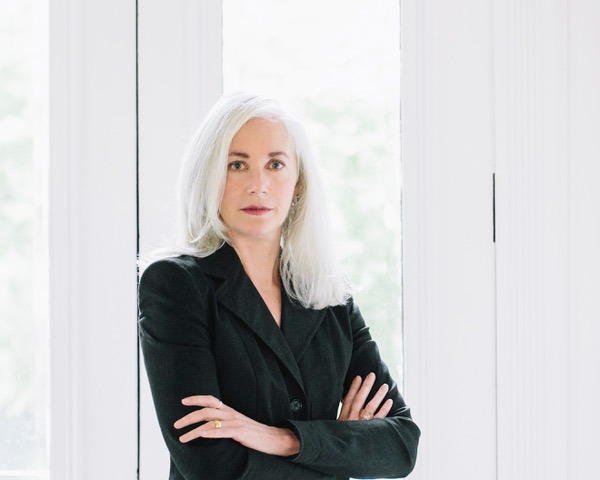
Differentiation of experience remains essential to art
An interview with Mary Rozell, Global Head of the UBS Art Collection
It all began in the 1960s, following a series of mergers of major investment banks – including PaineWebber, Union Bank of Switzerland, and Swiss Bank Corporation – into what is now known as UBS investment Bank.
The individual art acquisitions of the companies also merged, forming one of the world's most important corporate collections in which their common history has been preserved to this day. The UBS Art Collection is now decades old and growing steadily. Today the collection consists of 30,000 artworks by some of the most influential artists of our time, and spans from paintings to works on paper, photography, sculpture, video, and installations dating from the 1960s onward. The mission of the UBS Art Collection is to acquire and maintain groundbreaking works of art in the communities where the bank does business, and buying on the primary market in an effort to directly support artists and galleries. The firm also seeks to advance the international conversation about the art market through its global lead partnership with the most important art fair in the world, Art Basel, and as co-publisher of the ‘Art Basel and UBS Global Art Market Report'.
Since 2015, New York-based art lawyer, art historian, and author Mary Rozell has been Global Head, and the caring heart, of this vast and diverse corporate collection. Anyone who has ever crossed paths with Rozell has recognised her passion for visual art. According to Rozell, unlike most corporate art collections, the UBS art property is and should remain a functioning art collection and accessible not only to the bank's clients but to the public as well. The artworks are on display in 700 UBS offices globally and open to the wider public in the UBS Art Gallery at 1285 Avenue of the Americas, featuring permanent artworks and a roster of rotating exhibitions in its Midtown New York headquarters. The collection actively lends works to major art museums and cultural institutions for public exhibitions.
Mary Rozell, Global Head UBS Art Collection, and Ed Ruscha. Ed Ruscha VERY, 17.05. – 19.08.2018 at the Louisiana Museum of Modern Art, Humlebaek. Photo: David Parry. Artwork: UBS Art Collection © Ed Ruscha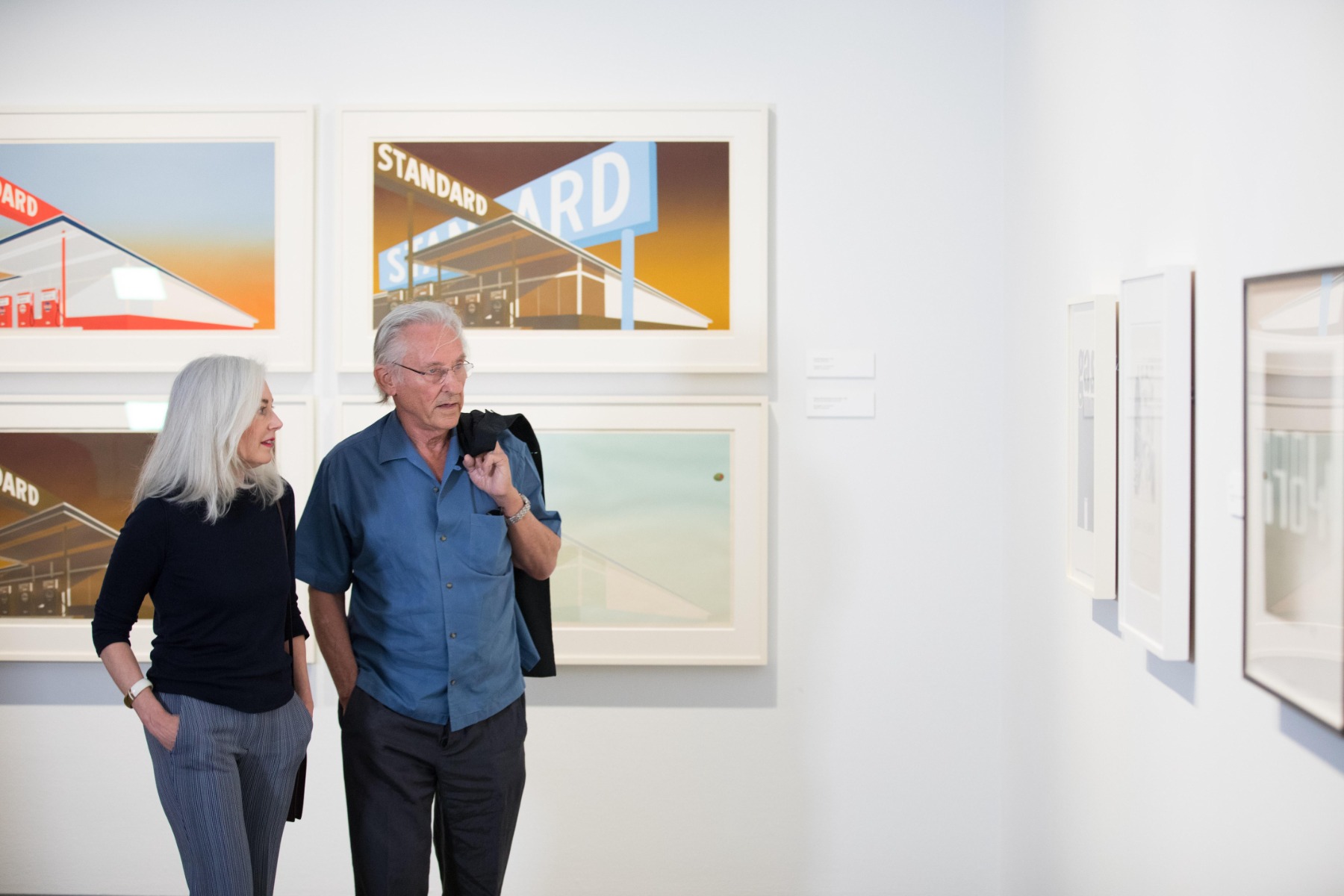
In 2018 the prestigious art collection came closer to the latitudes of northern Europe and the Baltic Sea when it showed over 50 exceptional works by Ed Ruscha in a dedicated exhibition at Denmark's Louisiana Museum of Modern Art, after which it travelled to KODE Art Museums and Composer Homes in Bergen, Norway. In 2019 UBS became a Gold Patron of the Garage Museum of Contemporary art in Moscow. In addition, the Russian language edition of Mary Rozell’s book, The Art Collector’s Handbook: The Definitive Guide to Acquiring and Owning Art, was introduced in various galleries across the Russian metropolis and Saint Petersburg. The handbook is an in-depth resource guiding collectors through their enriching journey, including how they might make a difference through their collections. And who better to write it than the woman behind one of the biggest and most impressive corporate art collections in the world?
The overseeing and sustainable management of such a global panaroma of contemporary art as the UBS Art Collection, does not happen overnight. Rozell’s career leading up to her latest position has been an exciting and committed journey with various destinations and meaningful steps.
An art lawyer and art historian, Mary Rozell has been an adviser to collectors, artists, and estates on legal and strategic issues relating to the acquisition, management, and de-accessioning of private art collections.
At the beginning of the nineties, Berlin began drawing attention as an A-City for art in Germany due to the increasing number of art producers settling there. Compared to other metropolises such as London and New York, Berlin, still in its infancy in terms of the art market, developed into a burgeoning display of young art – for emerging collectors, a pool with fish for the taking, so to speak. At the time, were you aware of the shifting of art centres toward Germany?
Very much so. I was in the middle of it. My first trip to Germany was in 1992. My destination was the art centre in Cologne; my flight, however, landed in Berlin. I was so taken by what was happening there, that I stayed an extra week – and then I moved there permanently. It was already clear that Berlin was the future.
Could you single out influential gallerists or personalities of that time who left a meaningful impact on you or your career?
At that time Max Hetzler was a driving force. He was the first dealer to uproot from Cologne and make the bold move to Berlin. He did this to be closer to the artists at considerable risk; the collector base was still in the Rhine valley. As Max was an internationally established dealer, this gave others confidence to follow suit. It was like watching a domino effect: over the next decade and beyond, wherever Max located his gallery in Berlin, others would follow. It must be said that he was also very generous, inviting the younger gallerists – who arguably could be his competitors – to his dinners and events, creating a community. His wife, Samia Saouma, was a force in her own right with her namesake gallery in Paris. I met her before her move to Berlin in the context of an exhibition I was working on.
How would you describe your itinerary when you visit Berlin today?
It’s very different. In the past, I would dedicate myself to seeing and experiencing as much as the city as possible. It was endless. Now when I visit Berlin, my focus is more on my immediate neighbourhood of Schöneberg. I am very content to mostly stay there, visit my local restaurants and shops, and dive deeper into the history on the streets all around. I still visit galleries and museums all around the city, of course. My life in Berlin is much slower and quieter than my life in New York, and I always treasure it.
You mentioned in another interview that you were already following the PaineWebber Collection back in the 80s, when you were just considering your career path. UBS Bank acquired PaineWebber and its collection in 2000, so when you were asked to run it, it all came full circle. This question may sound bizarre, but do you believe in the law of attraction?
Somewhat. It is still quite amazing to me that I ended up here as the steward of a collection I had long admired.
Your educational background in art history and law has given you the necessary tools to succeed in the modern art world. What's the most important thing that young or emerging art professionals – who wish to make a meaningful contribution to the creative industries – should consider when looking for their niche in today’s art world?
There are so many opportunities now – there’s so much fluidity between the different sectors of the art world, and new art businesses and models of working are being developed all the time. I think it is now much easier in many ways – things are more based on creativity and drive than class and inherited wealth. I believe the combination of following one’s passions and hard work is still the right formula, no matter what industry you’re interested in.
UBS Headquarters in Zurich, Bahnhofstrasse 45. View of John Armleder’s Agenda, 2018. UBS Art Collection © John Armleder. Photo: Martin Rütschi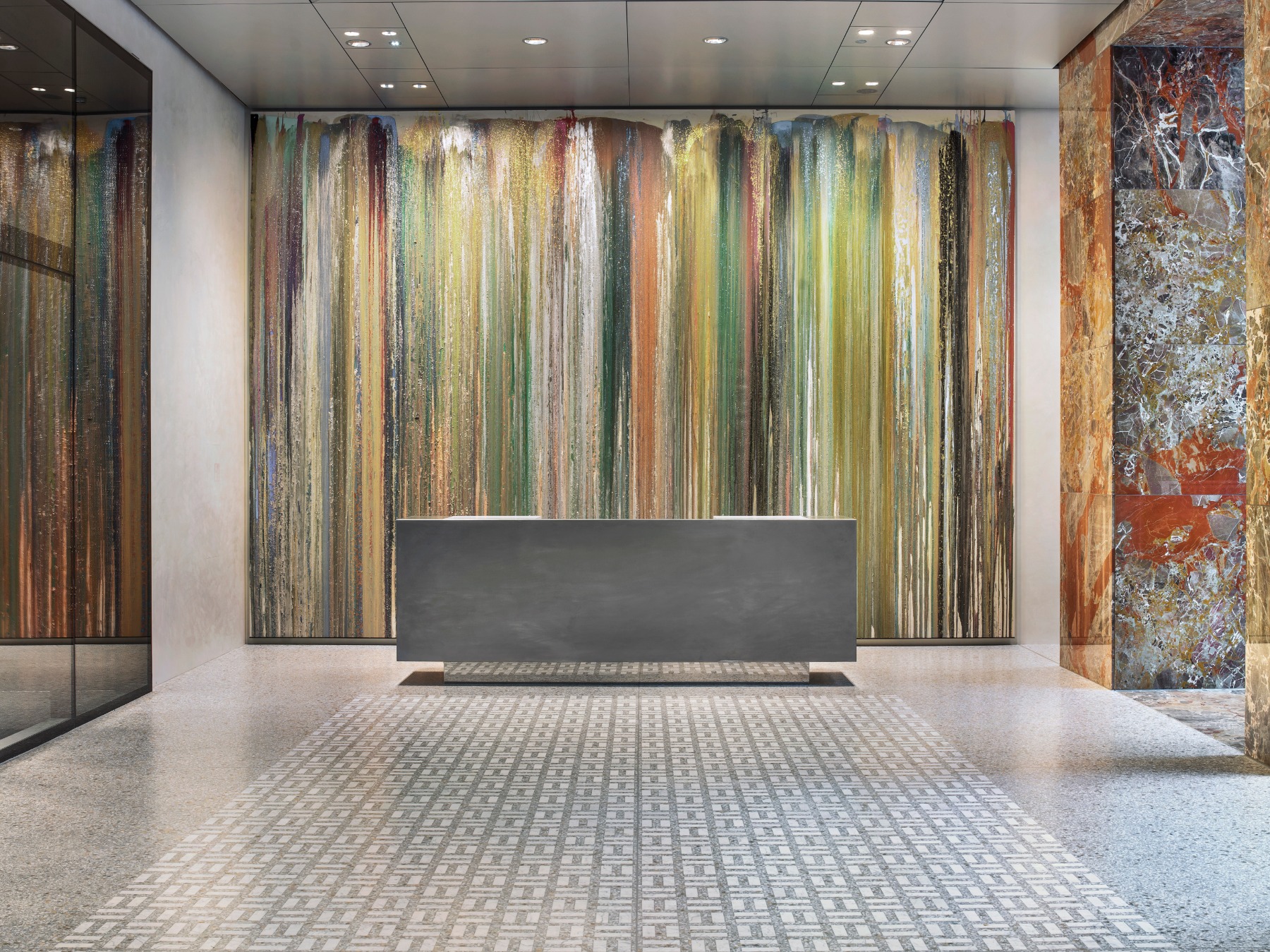
Thank you for the new edition of The Art Collector's Handbook. It sits on my bookshelf alongside books I've read with great pleasure, such as Erling Kagge's charmingly titled A Poor Collector's Guide to Buying Great Art, and, of course, the Arterritory series Conversations with Collectors. Different collectors have different approaches and motivations for collecting art. Are there any that you particularly respect, and/or collections that you find especially outstanding – and why so?
First of all, thank you. I believe that collecting is intensely personal and the best collections are formed out of passion. While some collect for investment purposes or status, I don’t find this very interesting, and the long-term results rarely hold up. At the moment, I am especially taken by collectors such as Swizz Beatz & Alicia Keys (The Dean Collection) and Arthur Lewis & Hau Nguyen, who collect African American artists and artists of the African Diaspora, thereby supporting the culture at a crucial time.
John Armleder, Agenda, 2018, mixed media on canvas, UBS Art Collection © John Armleder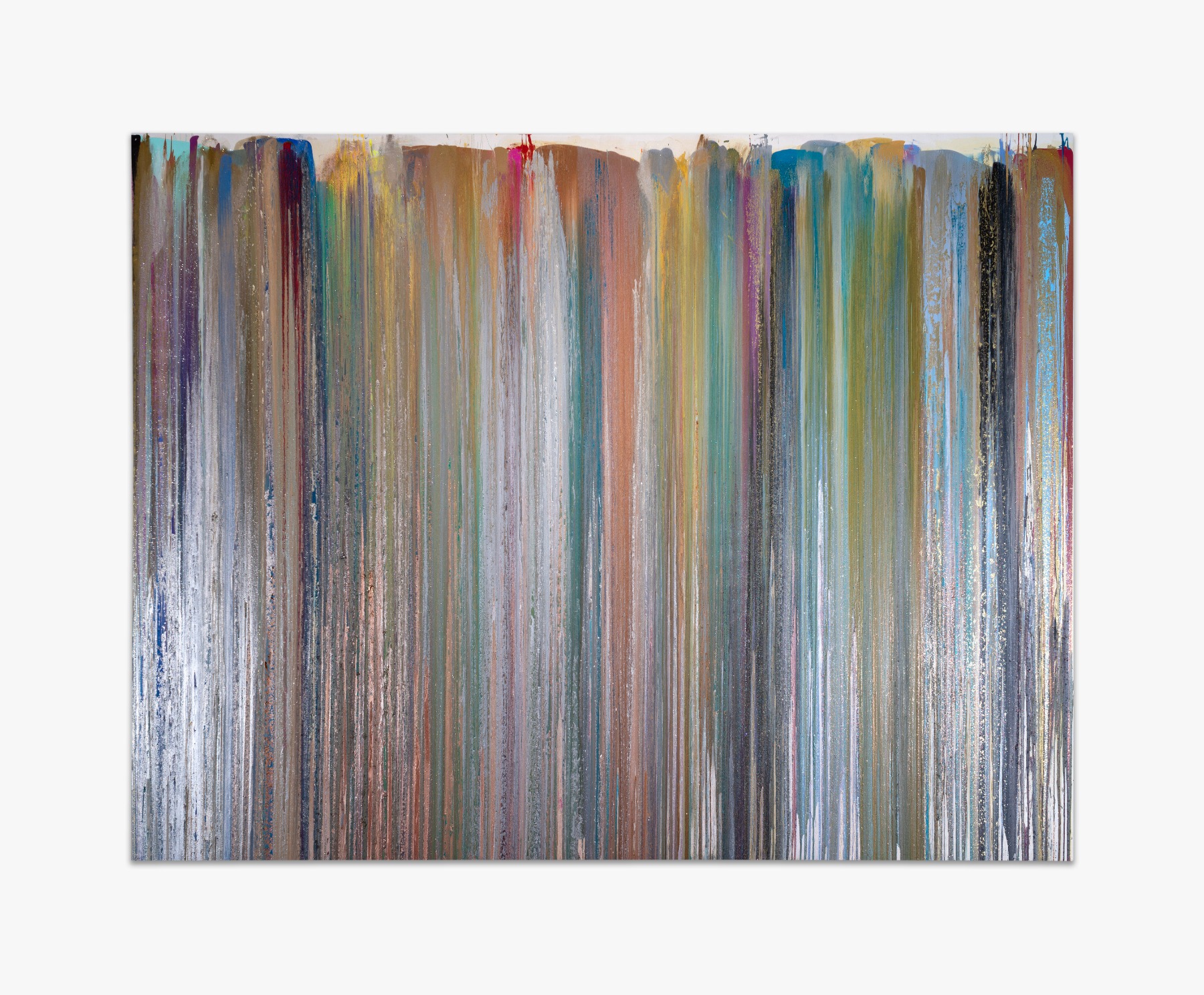
Could you tell me about the works of art from the UBS Art Collection that are on display in your New York office?
I do have a few works hanging there. Among them is a photograph of an empty Cape Cod beach by Harry Callahan. This work had special meaning for me because as a young art lawyer, my firm represented and worked closely with the artist. Secondly, I spend sacred quiet time on Cape Cod each summer, and these beaches have deep meaning for me. So, again, it’s personal.
Are you surrounded by artwork in your private space? Could you tell me a bit about artworks that you have picked for yourself and how they differ from works that you acquire for the UBS Art Collection?
The artworks in my home differ from those in the UBS Art Collection first and foremost by value. Each work is very personal to me, but that also means there is some overlap. I tend to collect work by artists with whom I have worked and have a relationship. I also collect works that resonate with my own personal history. That includes 20th-century German art and art that I have picked up at smaller fairs on my travels.
Corporate collecting during the pandemic
How are travel restrictions due to COVID-19 affecting the UBS Art Collection?
A number of our activities were halted, but like others, we were able to accomplish a remarkable amount digitally – whether that be installations, exhibitions, or thought leadership talks.
Sarah Morris, UBS Wall Painting, 2001/2019, household gloss paint on wall, UBS Art Collection © Sarah Morris. Photo credit: Tom Powel Imaging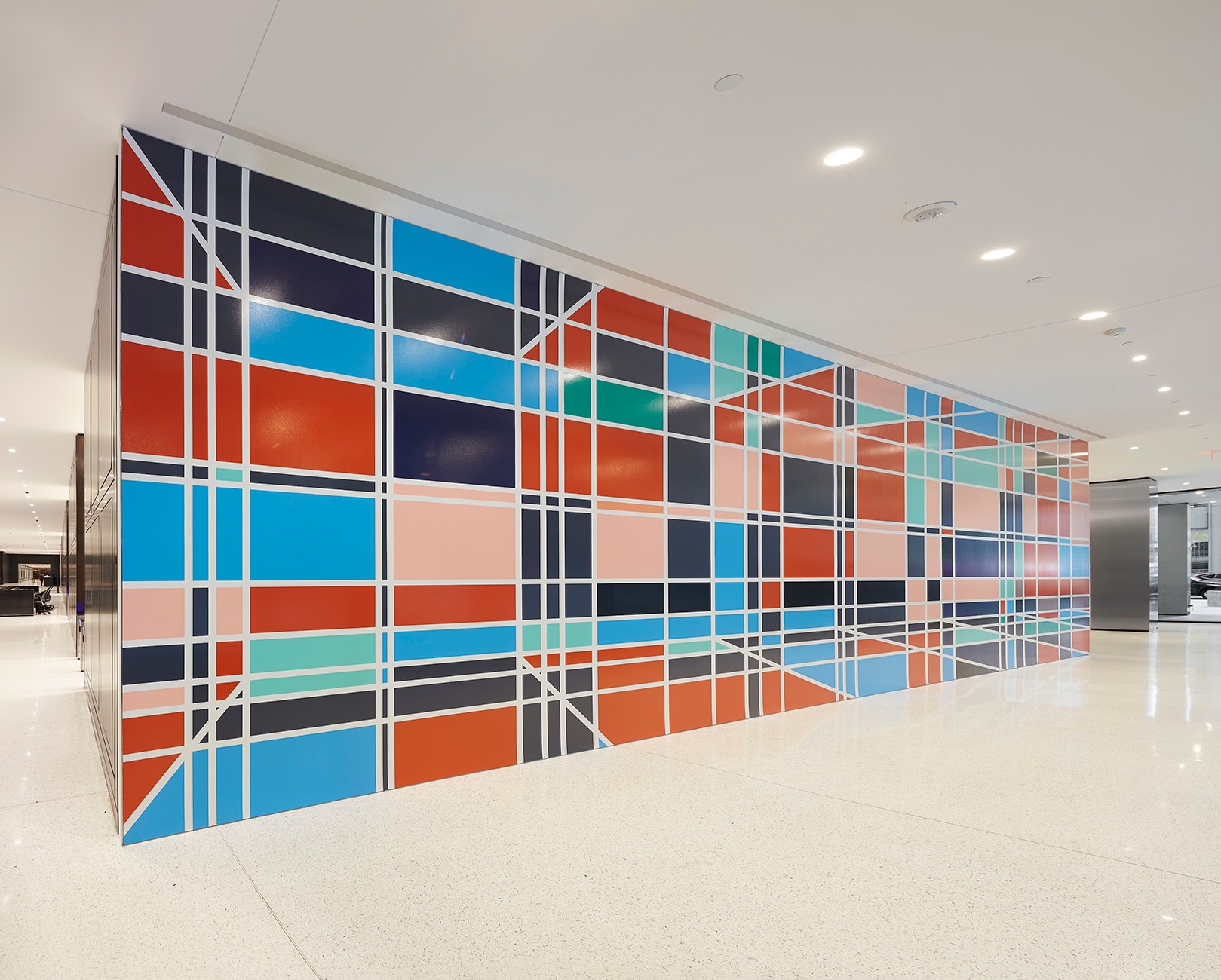
Did you or your team utilise complementary alternative options such as virtual viewing rooms or online auctions?
We did visit viewing rooms. We only acquire work on the primary market – in other words, we do not buy from auction – so online auctions did not come into play.
The closest UBS location to the Baltics states is in Moscow. In 2019 UBS Bank became a patron of the Garage Museum of Contemporary Art in Moscow. What are your impressions on the landscape of Russian contemporary art?
I think it is extremely interesting at the moment. The energy reminds me of Berlin in the 1990s.
Sarah Morris, UBS Wall Painting, 2001/2019, household gloss paint on wall, UBS Art Collection © Sarah Morris. Photo credit: Tom Powel Imaging
Can you highlight any interesting artistic positions that you’ve seen in Moscow/Russia?
I last visited Russia in 2018 to promote the Russian edition of my book. Though I cannot identify any particular artistic positions from that short time on the ground, it felt like something meaningful was happening, and I look forward to its further development.
In what way do acquired works of art from the region complement or fill in the missing gaps in the UBS Art Collection?
We acquire works of art at the time of their creation in the areas of the world where we do business. We strive to increase diversity within the Collection in order to reflect the world today.
Is it possible, in our modern-day world, to discern specifically geographical characteristics in art?
Yes, to a certain extent in some regions – but far less than in the past. The art world has globalised, and instantaneous communication via the internet has streamlined information exchange in an unprecedented way. That is not to say that local traditions and histories do not have their impact. Differentiation of experience remains essential to art.
Ding Yi, Appearance of Crosses 2006-3, 2006, acrylic on tartan, UBS Art Collection© Ding Yi. Courtesy of the artist and ShanghART Gallery
The UBS Art Collection consists of artworks by some of the most influential artists of our time. Since the Collection supports the gallery system, is there space in it for aspiring artists, perhaps even those without gallery representation?
Absolutely – but just not within our Collection at the present time. The internet – especially Instagram – has in many ways democratised the art market and provided artists with more opportunities than ever. That is a fantastic and welcome development. For a collection such as ours, however, acquiring works exclusively through galleries of international stature provides a necessary filter and, more importantly, aligns with our desire to support galleries who work in the primary market developing artists' careers at considerable risk and expense.
Is gallery representation a measure of the collectability of an artist’s works?
It can sometimes help, but there are many levels and kinds of galleries, and many artists who are successful without gallery representation.
Shinique Smith, Bale Variant No.0025 (Good & Plenty), 2019, clothing, fabric, ink, red wine and fabric dye, ribbon and wood, UBS Art Collection ©Shinique Smith. Photo credit: Dan Tuffs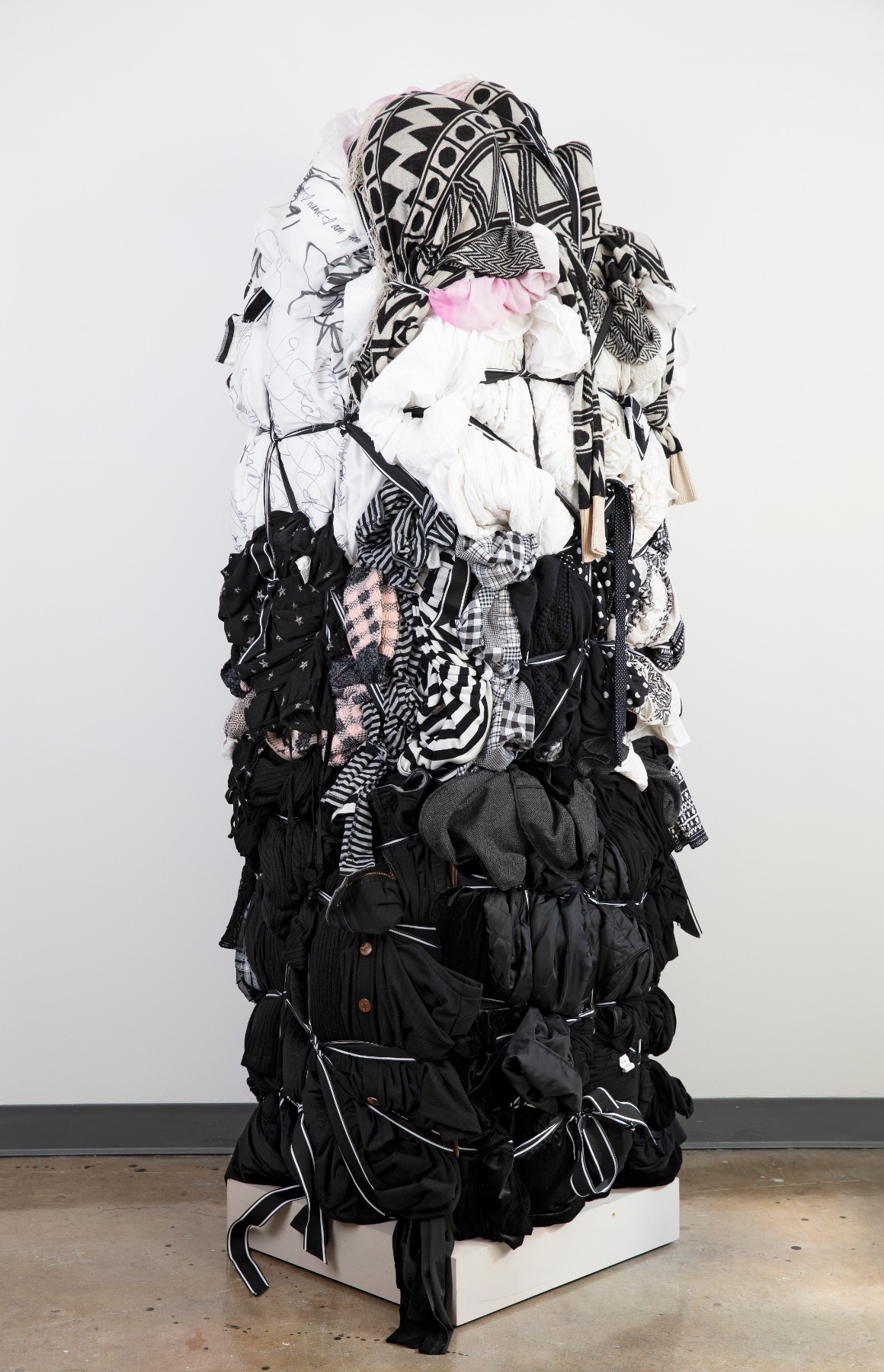
The new generation of galleries are the ones who take risks to discover young artists, often giving them their first solo exhibitions and introducing them at fairs. Do you pay attention to the new generation of galleries that participate in, for example, LISTE art fair or Vienna Contemporary?
Yes, absolutely. It is essential to pay attention to galleries at this level.
The current atmosphere
You are well acquainted with the art scene from all angles. What current developments have you observed, and how are you planning on responding to them?
The pandemic has had a huge impact on the art world. It has accelerated change, particularly on the digital front, but also with a renewed focus on one’s local art community and the galleries and institutions that populate it. We have also become more digital, and I think we can anticipate travelling less in the future.
I am aware that the UBS Art Collection does not necessarily want to acquire ephemeral works due to material restrictions. There has been a lot of talk lately about NFTs as an evolution of fine art collecting, and not just as part of the digital niche. How would you comment on the current hype surrounding NFTs?
I think it is too early to speculate on this. It is certainly an interesting development worth following – emblematic of the speed at which the art world is changing – but not one that will have an impact on our Collection at the moment.
Zheng Guogu, Computer Controlled by Pig's Brain 2014 No. 2, 2014, oil on canvas, UBS Art Collection © Courtesy of Zheng Guogu and Vitamin Creative Space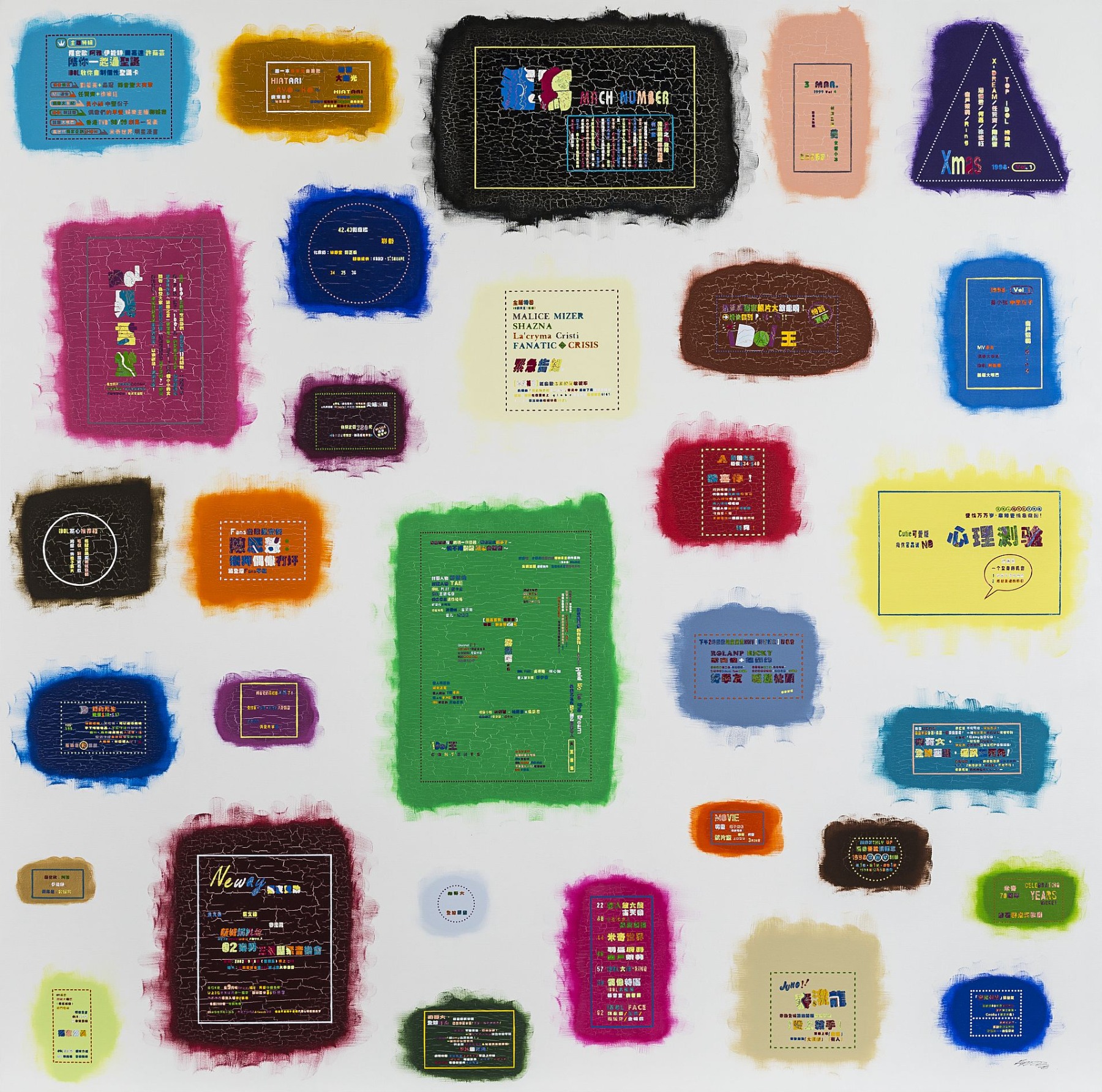
Upcoming
Do you have any plans for collaborations between the UBS Art Collection and public institutions in Europe in the near future?
While we have done so in the past, we do not have immediate plans due to the pandemic.
Can we expect another book from you anytime soon?
I think about making books all the time.
Is there another topic regarding the dissemination of art that is broad and current but has not yet been concisely and openly explained in paragraphs?
Surely, though I do not know at the moment what that is.
Thank you!
***
Visit the online exhibition The Art of One’s Own Era, which is open until September 6, 2021.
The exhibition is presented within a virtually recreated UBS Art Gallery while the real one remains temporarily closed to the public, and focuses on a selection of artworks spanning four decades and celebrating the art from the former PaineWebber Collection, which now forms an integral part of the UBS Art Collection. The exhibition includes abstract and figurative works by world-renowned American artists as well as their European peers, and covers Pop Art, Conceptual Art, the Pictures Generation, and Neo-Expressionism, including works by artists such as John Baldessari, Jean-Michel Basquiat, and Cindy Sherman.
‘UBS Art Collection: To Art its Freedom’ by Mary Rozell is a visual essay that captures the essence of the Collection, exploring its history and evolution as well as the various impulses that have shaped it across decades and continents.
‘The Art Collector’s Handbook: The Definitive Guide to Acquiring and Owning Art’ by Mary Rozell